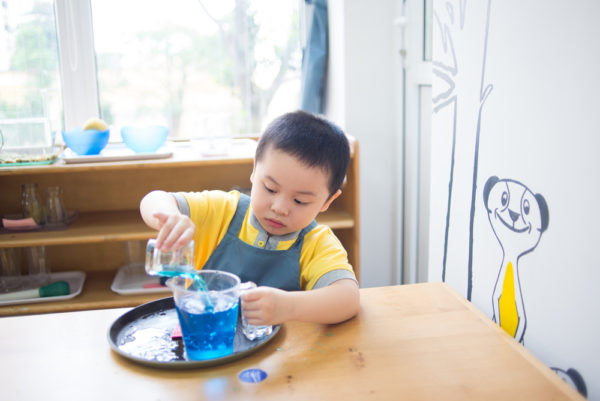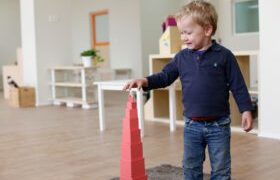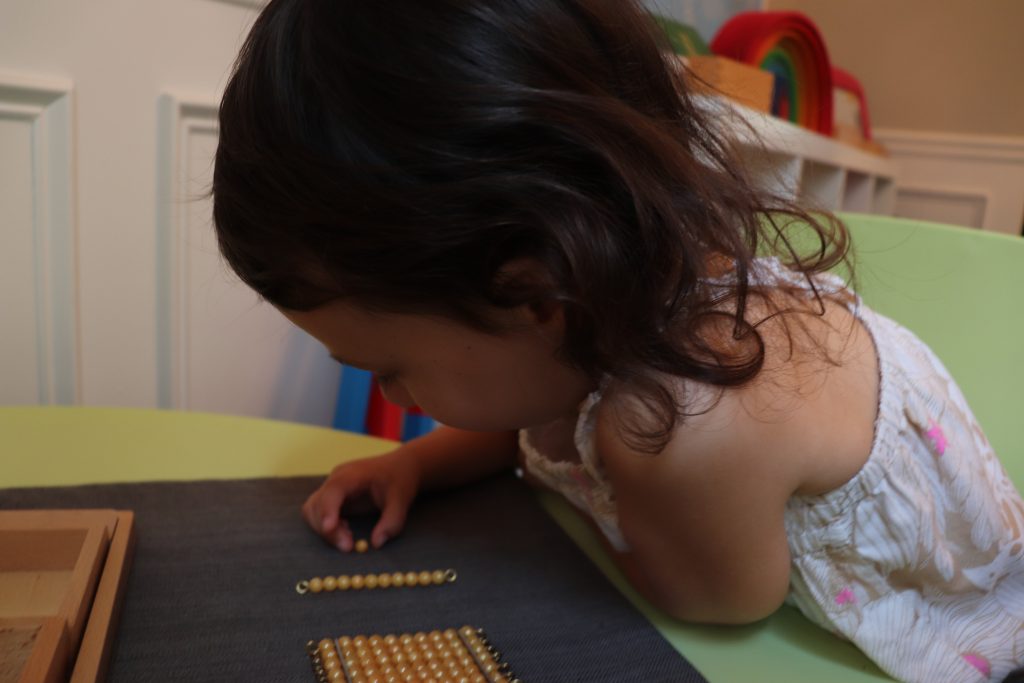What is normalization in a Montessori environment?
Dr. Montessori believed that a child's normal state was one in which children worked enthusiastically alone and together, treated each other and their learning environment with respect, and were able to exist in their own community, with little direction. This is termed normalization in Montessori.
The first time I heard this term, it was a little off-putting and it was definitely confusing. I mean, kids are normal. Why do we need to normalize them?
And what does normalization even mean?
If you ever get the pleasure of observing a Montessori classroom, you will witness children working joyfully and respectfully. You will see children working alone, deep in concentration.
You will also observe children working in groups without snatching, yelling, or other typical behaviors we have come to expect from this age group.

The three stages of normalization in Montessori
The first stage of normalization
When children first enter a Montessori primary class, they are typically 3 or slightly younger. They are new to the environment (a beautifully prepared environment) and are just getting used to the way things work.
They can sometimes be disruptive to the classroom community and interact with the materials inappropriately. Because of this, the teacher often spends extra time interacting with these new children and introducing them to the rules of the classroom.

Practical life activities are introduced to these newcomers. Children at this age enjoy the independence and immediate gratification these activities provide.
For example, a 3 year old new to a Montessori classroom will be able to practice on some of the easier dressing frames, such as the snap frame or button frame, and feel instantly satisfied and proud. She will want to practice this dressing frame repeatedly.
This is where normalization begins. Through the satisfaction in completing practical life tasks and through the concentration repeating these activities independently provides.
Also, some of the children who have been in the classroom for longer will often comment on how well the younger newcomer is performing a specific task.
This not only encourages the younger child to feel an extra sense of pride, but it’s how integration into the classroom community starts. The younger child will being to take interest in what the older children are doing after these exchanges.
The teacher's role is to observe what the young child is interested in and encourage her to complete the activities. A child of 3 or a bit younger may decide to leave a work unfinished and do something else instead.
The teacher allows the child to choose the different activity, but does continue to encourage her to finish her work.
This is how children are get accustom to work and the work cycle in Montessori.
The second stage of normalization
Children in the second stage of normalization haven't developed inner-discipline and they still struggle with self control.
They now have learned not to disrupt the classroom or interrupt others in their work, but they still struggle with completing their own work. They move from one activity to the next very quickly.

Teachers help kids at this stage discover their interests with presentations. The teachers continue to observe the child and their choices of activities and do their presentations accordingly.
It's easy for a teacher to mistake a child at this stage as normalized due to their increased concentration and lack of disruptive behaviors. This is where keen observation on the part of teacher is important.
The third stage of normalization in Montessori
The third and final stage of normalization is the one within a child can independently select activities and complete them, and their extensions to their completion. This child does not interrupt other children, but instead assists younger children in the classroom with their work. (One of the cool thing about mixed age classrooms!)
This child is about 5 or 6 years old at this point. She is very interested in her work and has amazing concentration.

She doesn't require much intervention from the teacher, however the teacher continues to observe for further interests and the desire for more challenging extensions.
She is calm, kind, and joyfully obedient when something is ask of her. She has now achieved inner-discipline and self control.
There are many other kids in the classroom who need more attention, but it's important for the teacher not to cut down on the attention of the normalized child.
The growth of every child in the classroom is equally important!
I hope you have a better concept of normalization after reading this!
Looking for feedback!
Cheers and don't forget get to subscribe!

Amazing explanation! I am going to use this article as training with my staff at my school and also as education for families of our school! Montessori is a HARD concept to explain to a lot of people, I feel anyway. This article does an amazing job with explaining the philosophy! Thank you